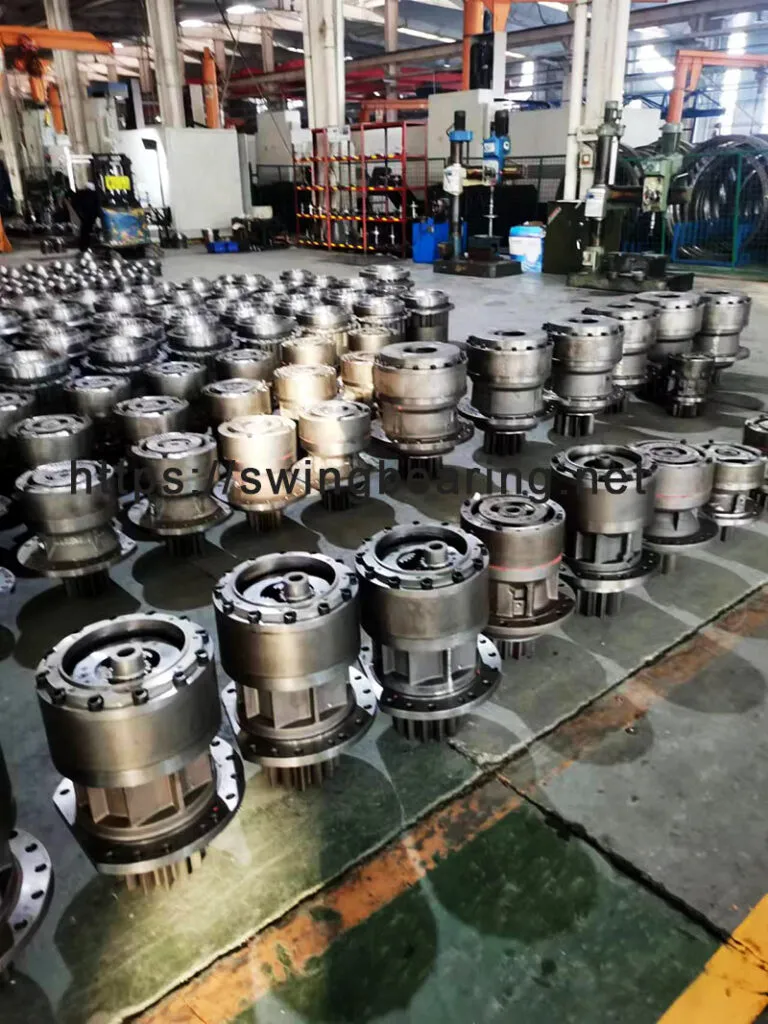
Excavators are among the most versatile and essential machines in the construction industry. With advancements in technology and the introduction of smart tools and job-specific attachments, the range of tasks these machines can perform continues to expand. Despite these innovations, many core components of excavators remain unchanged—final drives and travel motors for propulsion, cylinders for stick and boom control, tracks or wheels for movement, and crucially, the swing drive, which enables the machine to pivot and spin its upper structure effortlessly.
In this blog, we will explore the intricacies of the svyruoklinė pavara, detailing its functions, components, and importance in the operation of an excavator. By the end of this article, you will have a thorough understanding of what a swing drive is, how it works, and why it is vital to the functionality of an excavator.
A swing drive is a hydraulically-driven component in an excavator, enabling the machine to rotate its upper structure, or house, around its base. This rotation is fundamental to the excavator’s ability to perform tasks efficiently without needing to reposition the entire machine constantly.

The swing drive’s primary function is to allow the upper components of the excavator to rotate 360 degrees around its center axis. This ability to pivot enables the excavator to perform tasks from multiple angles without moving its base, enhancing efficiency and precision on the job site.
The swing drive is centrally located in an excavator, separating the upper, pivoting parts from the lower, traveling parts. Without a swing drive, the upper structure of the excavator, including the cab and attachments, would be fixed and stationary relative to the tracks or wheels. This would significantly reduce the machine’s versatility and efficiency, as operators would need to reposition the entire excavator to alter the position of the digging tools.
While the swing drive’s ultimate function is to enable the upper structure of the excavator to rotate, its design ensures smooth, controlled, and safe operation. Here’s a detailed breakdown of its working mechanism:
The swing drive uses hydraulic components, including valves, ports, and bearings, to control the motor’s speed and direction. Operators use a joystick in the cab to open and close hydraulic ports, regulating the hydraulic fluid flow and subsequently controlling the movement of the upper structure.
At the bottom of the swing gearbox, the pinion gear’s teeth engage with the teeth of the slewing gear fixed in the excavator’s carbody. As the pinion gear rotates, it causes the upper structure to revolve around the static slewing gear, enabling the 360-degree rotation.
The swing drive is designed to handle the heavy loads and high-impact conditions typical in construction environments. It includes safety measures to prevent damage, such as controlling momentum changes and operating on uneven ground. Skilled operators can use the swing drive to execute precise movements, combining actions from various components to perform complex tasks efficiently.

Operating an excavator requires mastery of its complex control systems. Inside the cab, operators have pedals and handles for undercarriage control and joysticks for controlling the boom, stick, bucket, and swing mechanisms. Advanced controls and screens further enhance the operator’s ability to manage the machine’s functions.
An experienced operator can synchronize the excavator’s components to execute intricate tasks. The swing drive’s role in allowing the upper structure to rotate smoothly and precisely is crucial to this synchronization, enabling efficient and accurate performance in various construction activities.

The swing drive is an essential component of an excavator, enabling it to perform a wide range of tasks efficiently and precisely. By understanding the swing drive’s functions, components, and operation, construction professionals can better appreciate its role in enhancing the machine’s versatility and productivity. Proper maintenance and operation of the swing drive are crucial to ensuring the excavator’s longevity and performance.
A1: The main function of a swing drive is to enable the upper structure of the excavator to rotate 360 degrees around its center axis, allowing for efficient and precise operation without needing to reposition the entire machine.
A2: The swing drive achieves rotation through a combination of hydraulic components and planetary gears. The swing motor powers the gearbox, which uses planetary gears to convert rotational force into torque, driving the pinion gear that interacts with the stationary slewing gear.
A3: The swing drive’s central location is important because it separates the pivoting upper structure from the traveling lower structure, enabling the upper components to rotate independently of the tracks or wheels, enhancing the excavator’s operational flexibility.
A4: Planetary gears in a swing drive convert the high-speed rotational force from the swing motor into low-speed, high-torque output. This conversion is essential for controlling the precise and powerful rotation of the excavator’s upper structure.
A5: An operator controls the swing drive using joysticks in the cab, which regulate the hydraulic fluid flow through ports and valves in the swing motor. This control allows the operator to adjust the speed and direction of the upper structure’s rotation.